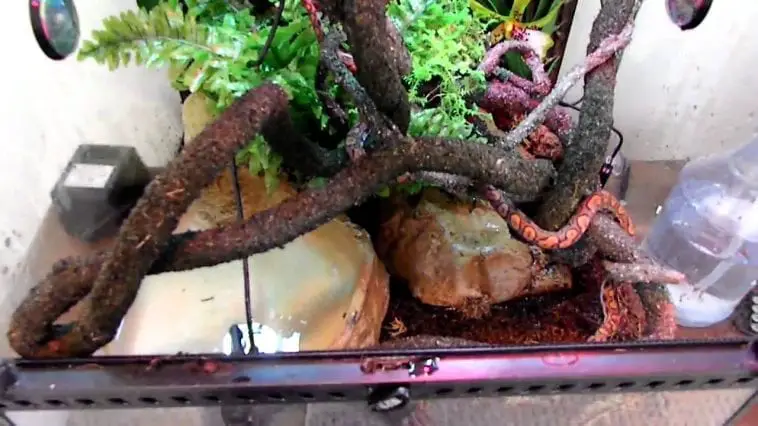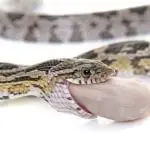The rainbow boa was also known as the Brazilian rainbow boa, is an excellent pet that can thrive well in captivity, especially if its needs are met, such as its cage, temperature and humidity level, food, and nutrients as well as proper handling. They are not high maintenance but in taking good care of them, you still need to consider the expenses such as food and accessories that you will need for the next couple of years. In this article, we’ll show you a basic guideline on how to take good care of your rainbow boa.
Housing
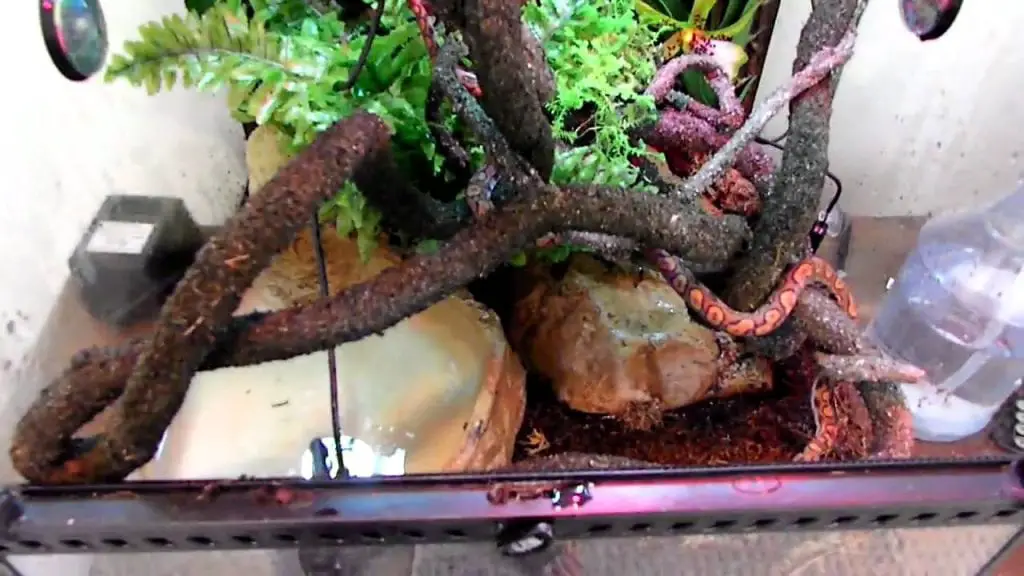
You can place them in any type of enclosure, whether it is a glass type or wooden type, as long as it is the right size and that it is escape-proof. Rainbow Boas, both juveniles and adults, are required to occupy a vivarium that has total dimensions of 60 x 45 x 45cm or a 6 ft snake is to 4.5ft vivarium. Their cage is sub-divided into different areas such as their basking area, hiding area and play and eating area. A snake tank and a fish enclosure are different, avoid using a fish tank to snakes because its fish tanks are not good when it comes to humidity levels.
Substrate and Accessories
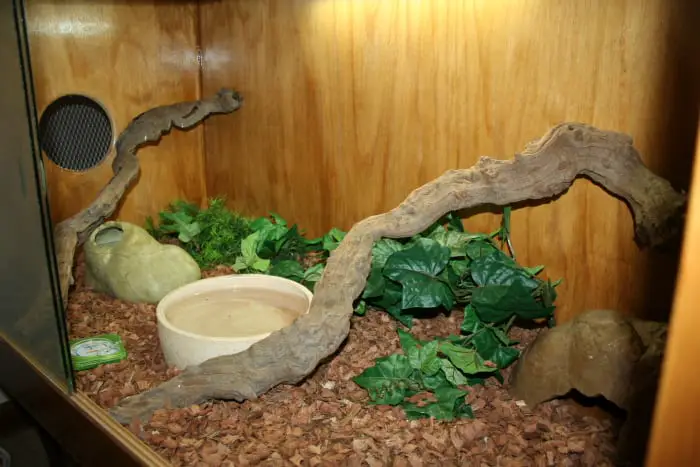
It is ideal to choose a substrate that is good at maintaining temperature and humidity levels. The recommended substrate is kiln-dried pine, shredded aspen, vermiculite, and perlite where they can burrow, but if you are looking for a convenient one, the newspaper is a good option where you can easily clean and maintain cleanliness. Adding in sphagnum moss is also advisable to maintain the right humidity levels.
Avoid using and another substrate rate that has fine particles that they can inhale or go through in their passages that may cause a blockage. Aside from the substrate, there is other stuff needed inside their cage, such as logs or branches where they can play and rest as well as hiding boxes where they can feel secure when they are threatened. You must ensure that all the things that you can see on their cage is safe and will not cause any harm to your snakes.
Temperature and Humidity Level
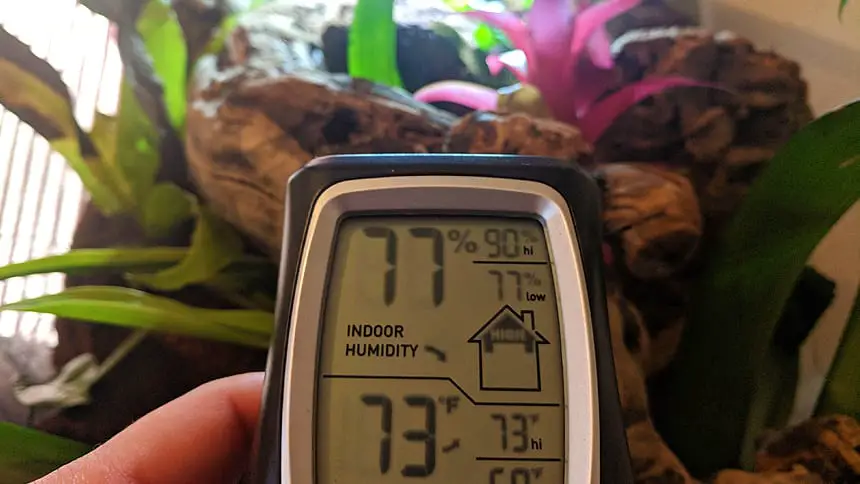
The rainbow boa tolerates low temperature unlike other snakes, but they cannot withstand a high-temperature level. They should only be exposed with temperatures not exceeding at 85 degrees Fahrenheit and not fluctuating by 70 degrees Fahrenheit. You need to be attentive in maintaining the temperature and humidity level because if the changes are not attended to accurately.
The ideal humidity level should be maintained at 75% for adults while the needs of the juvenile at least 85% humidity level. Make sure that the humidity level doesn’t go down by 60% because if it happens, it may be a cause of other health problems such as respiratory illnesses, regurgitation, and dehydration, which is fatal. Make sure that the cage has both warm and cold temperatures that are still within the temperature range ideal for them.
Feeding
In the wild, the rainbow boa feeds on birds, rodents, lizards, and other animal species that are smaller or slightly larger than them as long as they can easily overpower it. Juvenile rainbow boas are fed once every 7 days with their chosen meal, usually mice or rats. They are known to have a good appetite, but if in any case, they refuse to it, it could be because that they are anticipating changes in their bodies such as shedding or it could be because of illnesses or poor husbandry.
Always makes sure to feed them on their scheduled feeding time and date so as not to interrupt their feeding cycle. It is important to feed them in the appropriate time and size to avoid health problems such as overweight, obesity, and regurgitation. Their water supply for drinking should always be available to keep hydrated. A well-hydrated snake will not have any difficulties in terms of shedding, and respiratory illnesses can be avoided.
Handling
The rainbow boa gets nervous and threatened easily if they are not used to handling. You and your snake should always have playtime for them to be comfortable with your presence. You should know the proper way to handle them because they are quite aggressive when threatened.
They have strong jaws that can tear your skin; that is why in handling them, make sure that your hands are away from their mouths. Avoid handling them more often to avoid stress, especially if you see them resting in their hiding place.
Cleanliness
If you have used kiln-dried pine, shredded aspen, vermiculite, and perlite as a substrate, it is advisable to clean it every week. If it looks and smells dirty, replace it to avoid bacterial buildup. It is ideal for cleaning and disinfecting their whole cage every 2 weeks. In disinfecting, make sure to use products that are organic so as not to cause negatively into your snake.
Grooming
Grooming is an important aspect when it comes to taking care of rainbow boa. Their grooming includes their natural shedding and taking a bath. You will not have a problem with bathing them because they love the refreshing vibe of the water. Their poop must be removed every day.
Tips in Handling Rainbow Boa
- If your rainbow boa is just new to its place, it needs time and energy to be comfortable. As a basis, they need to complete at least 4 meals to know that they are familiarized with their surroundings, that is why to avoid handling them too often.
- Avoid holding your rainbow after they finished their meal because when their food is still bulky in their stomach, it causes irritability that may be a reason for aggressiveness.
- Don’t ignore any signs if your snake is weak or if it shows weird behavior. Take them to the veterinarian as soon as possible for proper diagnosis.
- Every time you would get your snake out of the cage, use a snake hook because they might mistakenly assume your hands for food. Slide the hook into the mid-section of their bodies to avoid inflicting injury to the snake.
Final Thoughts
Taking rainbow boa in captivity entails great responsibility. You must ensure that its basic needs are always met. They cannot survive on their own in captivity; they need attention, care, and love to grow healthy and happy. The care guideline above must be followed to ensure that you will be with your snake longer.

